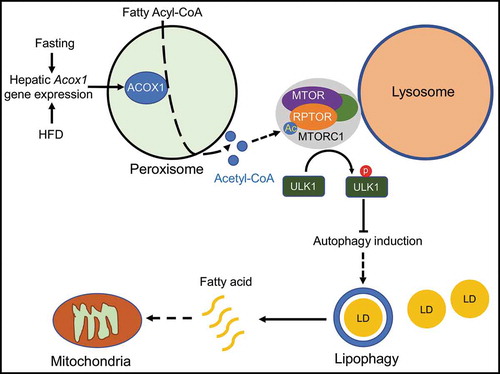Figures & data
Figure 1. A model depicting the proposed molecular mechanism through which peroxisomal β-oxidation regulates MTORC1 activation to inhibit lipophagy. The expression of the peroxisomal fatty acid oxidation enzyme ACOX1 increases with fasting or HFD, resulting in increased production of acetyl-CoA, which is channeled to lysosomes for acetylation of the MTORC1 component RPTOR; this leads to MTOR activation. Phosphorylation of ULK1 at Ser757 by MTOR suppresses the induction of autophagy and lipophagy. Fatty acids liberated through lipophagy may be oxidized in mitochondria.

